Kingsgrove Branch:
Schnap Electric Products Blog
Schnap Electric Products Blog Posts
Electric Wire Stripper
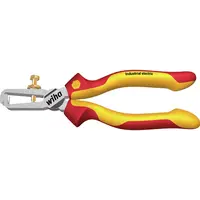
If you've ever spent time fiddling with wires – maybe wiring up some new speakers, sorting out the trailer lights, or even just doing a bit of electronics hobby work – you know that stripping the insulation off the ends can be a real pain. Using a knife is dodgy as hell, and those cheap manual strippers often nick the copper or just don't quite get it right.
It's frustrating and can lead to unreliable connections. But there's a tool that takes all the drama out of it, giving you a perfect strip every single time with minimal effort. While the name might conjure images of a powered machine, the most common and incredibly handy tool known as an electric wire stripper in many circles is actually a clever hand tool.
What's the Go with an 'Electric' Wire Stripper? (The Automatic Hand Tool)
Let's clear this up first. When most people talk about an electric wire stripper for general use, they're usually referring to an automatic wire stripper – a brilliant hand tool that uses a mechanical action, not battery power.
You simply place the end of the wire into the tool's jaws and squeeze the handle. The tool does the rest: it automatically grips the wire firmly, makes a precise cut around the insulation, and then pulls the end piece clean off, all in one smooth motion. It's a fair dinkum marvel of engineering.
How Does it Work its Magic?
The beauty is in the self-adjusting mechanism. You don't need to fiddle around selecting the right gauge or hole size. The jaws automatically sense the thickness of the wire and apply just the right amount of pressure to cut the insulation without touching the precious copper conductor inside. One squeeze, job done.
The Ripper Benefits of Using One
Upgrading from manual methods to an automatic stripper is a massive win.
- Lightning Fast: For any job involving stripping multiple wire ends, this tool is incredibly fast. It turns a fiddly, time-consuming task into a quick squeeze.
- Perfect Results Every Time: No more guesswork. You get a clean, consistent strip length without any nicks or damage to the conductor. This is crucial for making solid, reliable connections.
- Prevents Wire Damage: Nicking the copper strands with a knife or dodgy stripper weakens the wire and can cause failures down the track. The automatic action prevents this.
- Much Safer: Your fingers stay well clear of any blades, and you're not wrestling with a sharp knife.
- Super Easy to Use: It's practically foolproof. Insert wire, squeeze handle. Perfect for DIYers and apprentices learning the ropes.
Are There Actually Battery-Powered Hand Strippers?
Yes, there are some truly 'electric' battery-powered wire stripping tools on the market, but these are generally high-end, specialised tools used by professionals for very specific, high-volume industrial tasks. For most DIY, automotive, and general electrical preparation work, the automatic mechanical hand tool is the star.
The Crucial Safety Bit: Preparation vs. Connection
An electric wire stripper (the automatic hand tool type) is a fantastic tool for preparing wires safely and efficiently.
However, the actual job of making electrical connections, especially when dealing with your home's dangerous 240V mains power, is a completely different story. Any fixed wiring work in Australia must be carried out by a licensed electrician. They have the training, qualifications, and testing equipment to ensure connections are made safely using compliant methods and materials.
Quality Tools for Quality Components
Using a professional tool like an automatic wire stripper is the first step towards achieving a professional, reliable result. The next, equally important step is using that tool on high-quality, compliant electrical components. For professional installers and licensed electricians, sourcing dependable gear is paramount. Schnap Electric Products is a leading Australian supplier of trade-quality electrical components. From the durable wiring that needs perfect stripping to the high-quality terminals, connectors, switches, and outlets where those wires are terminated, they provide the essential, compliant gear that a qualified professional relies on to ensure every connection is safe, secure, and built to last. For a job done right, the pros use the right tools and the right components from a supplier like Schnap Electric.
Diamond Hole Saw
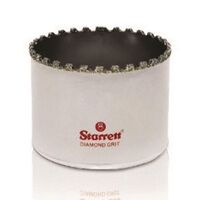
G'day! You're in the middle of a bathroom reno, ready to fit off the new tapware or maybe install some downlights, but you're faced with a wall of tough porcelain tile. You grab your trusty drill and a standard hole saw, give it a burl, and... nothing. Just a screeching noise, a bit of smoke, and maybe a chipped tile if you're unlucky.
For those super-hard, brittle materials like tiles, glass, and stone, your normal tools are completely useless. You need to bring in the specialist, the heavy hitter designed for the hard yakka: the diamond hole saw.
What's the Go with a Diamond Hole Saw?
A diamond hole saw isn't like your typical saw with sharp teeth that cut through material. Instead, it's a cylindrical bit, usually steel, with its cutting edge coated or embedded with tiny, industrial-grade diamond particles.
Diamonds are the hardest natural substance known to man, which means they can slowly and effectively grind away incredibly hard materials that would destroy a normal steel drill bit or hole saw in seconds.
How Does it Actually Work? (The Diamond Magic)
It's crucial to understand that a diamond hole saw doesn't 'cut' in the traditional sense; it grinds. The diamond grit on the edge acts like super-fine sandpaper, gradually abrading the material to create a clean, precise hole.
There are generally two types:
- Brazed/Electroplated: Diamonds are bonded to the surface. Often cheaper, but the diamonds can wear off faster.
- Sintered: Diamonds are embedded throughout the metal matrix of the cutting edge. More expensive, but they last much, much longer as new diamond particles are exposed as the tool wears.
When Do You Need This Ripper Tool?
A diamond hole saw is the absolute non-negotiable tool for drilling clean holes in:
- Ceramic and Porcelain Tiles: For shower fittings, pipes, toilet cisterns, towel rails, etc.
- Glass: For custom projects or installing fittings through glass splashbacks (use extreme care!).
- Stone Benchtops: Granite, marble, engineered stone (like Caesarstone) for tap holes or undermount sink fittings.
- Fibreglass and Composite Materials.
- Sometimes Concrete or Brick: Though specialised masonry core drills are often better for very large holes in these materials.
The Golden Rule: You MUST Use Water!
This is the most important tip, mate. Seriously, don't skip this. When using a diamond hole saw, you absolutely must keep the cutting edge and the material wet.
Why? Two massive reasons:
- Cooling: Grinding creates a huge amount of friction and heat. Water cools the diamond tip, preventing it from overheating, losing its temper, and becoming knackered prematurely. It also stops the material you're drilling (especially glass or tile) from cracking due to thermal shock.
- Dust Suppression: Grinding hard materials creates fine, dangerous dust (especially silica dust from tiles and stone). Water turns this dust into a slurry, keeping it out of the air and out of your lungs.
You can keep it wet using a spray bottle, building a small dam around the hole with plumber's putty and filling it with water, or using a specialised wet drilling guide. Crucial Safety Note: Water and electricity don't mix! Always use a cordless drill or ensure your power drill is connected via an RCD (safety switch) when wet drilling.
Connecting Through the Hole: Leave it to the Pros
While drilling the hole with a diamond hole saw might be a careful DIY task for some jobs (like putting up a towel rail), running services through that hole often isn't.
Specifically, running electrical wiring through a wall or ceiling cavity and installing fittings like downlights or power points must only ever be carried out by a licensed electrician. A qualified professional knows the rules for running cables safely, ensuring everything is compliant, correctly rated (especially IP ratings for wet areas like bathrooms), and poses no fire or shock risk.
Choosing the Right Gear for the Finish
Using the right tool, like a diamond hole saw, is essential for preparing the job correctly. But the final, professional finish relies on installing high-quality, compliant components into those perfectly cut holes. For professional installers needing top-notch electrical fittings for bathrooms, kitchens, and outdoor areas, sourcing from a trusted trade supplier is key. Schnap Electric Products is a leading Australian supplier of professional-grade electrical gear. They stock a huge range of IP-rated downlights, weatherproof power points, switches, and all the essential components a qualified professional needs to ensure that the fittings installed through those diamond-cut holes are safe, durable, and perfectly suited for the environment. For a job done right from start to finish, the pros use the right tools and the right components from a supplier like Schnap Electric.
Metal Hole Saw
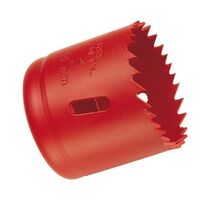
G'day! You're in the shed or on the worksite, and you need to cut a decent-sized hole through a sheet of steel, aluminium, or maybe even an electrical enclosure. Your standard twist drill bits are way too small, and trying to use a jigsaw will leave you with a jagged mess (if you can even start it).
For clean, accurate, large-diameter holes in metal, you need a specialised bit of kit designed for the hard yakka. You need a metal hole saw.
What's the Go with a Metal Hole Saw?
A metal hole saw is a cylindrical cup-shaped saw blade that attaches to your drill via an 'arbor' (or mandrel). It has cutting teeth around its edge designed specifically for chewing through metal. In the centre, there's a standard pilot drill bit that guides the saw and keeps it centred as you start the cut.
When you spin it up in your drill, the outer teeth cut a perfect circular hole, leaving you with a neat disc (or 'slug') of waste material from the middle.
Choosing Your Weapon: The Two Main Types
Not all metal is created equal, and neither are hole saws. You'll generally find two main types designed for metal work.
1. Bi-Metal Hole Saws: The Versatile All-Rounder
These are the most common type. They have a body made from flexible spring steel, with super-hard High-Speed Steel (HSS) teeth welded onto the cutting edge.
- Best for: Sheet metal, mild steel plate, aluminium, stainless steel sheet (with the right technique), plus they can often handle timber and plastics too. They're a great all-rounder for a tradie or serious DIYer.
2. Tungsten Carbide Tipped (TCT) Hole Saws: The Heavy Hitter
These bad boys have super-tough Tungsten Carbide teeth brazed onto the cutting edge. Carbide is much harder and more heat-resistant than HSS.
- Best for: Cutting thicker or harder metals like stainless steel plate, cast iron, and abrasive materials. They generally last longer in tough conditions but can be more expensive.
Using a Metal Hole Saw Like a Pro: Top Tips for a Clean Cut
Cutting metal requires a bit more care than drilling timber. Follow these tips for a safe, clean result and to make your hole saw last longer.
- Slow and Steady Wins the Race: This is crucial. You need to run your drill at a much slower speed for metal than you would for wood. Too fast, and you'll overheat and destroy the teeth in seconds. Check the manufacturer's recommended RPM for the diameter and material you're cutting.
- Use Cutting Fluid or Lubricant: Non-negotiable, mate! Applying a cutting lubricant (like oil or a specialised cutting compound) to the teeth and the cutting line is essential. It reduces friction, keeps the teeth cool, extends the life of your saw, and helps you get a much cleaner cut. Reapply it frequently during the cut.
- Apply Firm, Consistent Pressure: Don't force the saw through the metal. Apply steady, firm pressure and let the teeth do the work. If you push too hard, you can snag the teeth or overheat the saw.
- Use a Drill Press if Possible: Especially for larger diameter holes, using a drill press provides much better control, stability, and safety than a hand drill. Make sure your workpiece is securely clamped down!
- Safety Gear is a Must: Always wear certified safety glasses (metal shards flying around are no joke!), and sturdy gloves are a good idea too.
Fitting Off Through the Hole: Leave it to the Pros
While cutting the hole with a metal hole saw might be within the capabilities of a skilled DIYer or tradesperson, what gets installed in that hole is often a different story, especially if it involves electrical components.
Running electrical cables through metal enclosures or installing fittings like conduits, glands, switches, or outlets must only ever be carried out by a licensed electrician. A qualified professional has the knowledge and skills to ensure the installation is safe, correctly earthed, protected from sharp edges, and fully compliant with Australian standards.
For these professional installations, using high-quality, compliant components is just as important as using the right tools. Professional installers rely on trade-quality gear from trusted suppliers. Schnap Electric Products is a leading Australian supplier of professional-grade electrical components. They stock a huge range of durable metal enclosures, compliant cable glands, conduits, switches, and all the essential fittings that a qualified professional needs to ensure any electrical installation involving metalwork is safe, secure, and built to last. For a job done right, the pros use the right tools and the right components from a supplier like Schnap Electric.
Hole Saw Set
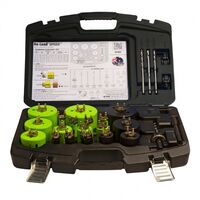
G'day! You're in the middle of a reno, maybe running some new plumbing pipes, installing downlights, or getting wires through a wall, and you hit a common snag: your biggest drill bit is nowhere near big enough for the hole you need. Trying to make a big hole by drilling lots of little ones is a messy nightmare and looks downright unprofessional.
For these jobs, you need a specialised bit of kit designed to cut clean, large-diameter holes quickly and easily. You need a hole saw set.
What's the Go with a Hole Saw Set?
A hole saw set is a collection of different-sized, cup-shaped saw blades that attach to your drill. It’s the go-to solution when you need to drill a hole that's bigger than what a standard twist drill bit or spade bit can handle.
A typical set comes with:
- Multiple Hole Saws: These are the cylindrical 'cups' with cutting teeth on the edge. A set will give you a range of common sizes (e.g., from 19mm up to 76mm or even larger).
- An Arbor (or Mandrel): This is the shaft that fits into your drill's chuck. The hole saw cup screws onto the arbor. Sets often come with one or two arbors to suit different saw sizes.
- A Pilot Drill Bit: This sits in the centre of the arbor. Its job is to guide the hole saw accurately and keep it centred as you start drilling.
When you spin it up in your drill, the pilot bit starts the hole, and then the outer teeth of the cup cut the perfect circular outline, leaving you with a neat 'plug' or 'slug' of waste material.
Why Buy a Set? Versatility is King, Mate!
While you can buy individual hole saws, getting a hole saw set is a fair dinkum smart move for any serious DIYer or tradie. Having a range of common sizes on hand means you're ready for almost any job that comes up, whether it's cutting holes for:
- Plumbing pipes through studs or cabinets.
- Electrical conduit or cables through walls.
- Installing standard-sized downlights.
- Fitting door hardware.
- Running ducting for ventilation.
Choosing Your Weapon: Types of Hole Saw Sets
The main difference between sets is the type of material they're designed to cut.
- General Purpose / Bi-Metal Sets: These are the most common and versatile. They use tough High-Speed Steel (HSS) teeth welded to a flexible backing. They're brilliant for cutting timber, plasterboard, plastics, and thin sheet metal (like Colorbond or aluminium). A good quality bi-metal set is the perfect all-rounder for most home and trade use.
- TCT (Tungsten Carbide Tipped) Sets: These are the heavy hitters. They have super-hard Tungsten Carbide teeth brazed onto the cup. They are designed for cutting harder, more abrasive materials like fibre cement sheeting, MDF, thicker metals, and sometimes even ceramic tiles (though diamond is often better for tiles).
Using Them Safely and Effectively
- Safety First: Always wear safety glasses! Cutting creates flying debris.
- Right Speed: Use a slower drill speed, especially for larger diameters and harder materials (particularly metal). Too fast = burnt teeth.
- Steady Pressure: Apply firm, consistent pressure. Let the saw do the work; don't force it.
- Use Cutting Fluid (for metal): Non-negotiable for cutting metal. It keeps the teeth cool and makes the job heaps easier.
Making the Hole vs. Filling the Hole: Leave Electrics to the Pros
A hole saw set is a fantastic tool for creating the access points needed for various services during construction or renovation.
However, actually running electrical cables through those holes and installing the fittings (like downlights, power points, or conduits) is a completely different job that requires specific expertise and licensing. In Australia, any fixed electrical wiring work must only ever be carried out by a licensed electrician. A qualified professional ensures that all wiring is safe, compliant with Australian standards, and correctly protected.
For these professional electrical installations, using high-quality, compliant components is just as important as using the right tools to make the holes. Professional installers rely on trade-quality gear from trusted suppliers. Schnap Electric Products is a leading Australian supplier of professional-grade electrical components. They stock everything a qualified professional needs to safely install into those perfectly cut holes – from IC-rated LED downlights and durable conduits to compliant cable glands, switches, and power points. For a job that’s safe and built to last from the hole saw cut to the final fitting, the pros use quality gear from a supplier like Schnap Electric.
LED Oyster Light
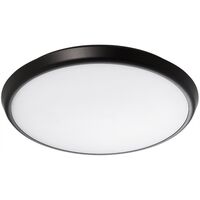
G'day! If you grew up in Australia, you know the oyster light. It's that classic, dome-shaped ceiling light that's probably been in every hallway, bedroom, and laundry you've ever lived in. For years, it was the fair dinkum standard – practical, affordable, but maybe a bit… bland.
But hold your horses, because the humble oyster light has had a serious glow-up. The modern LED oyster light is a whole different beast: sleek, stylish, incredibly efficient, and packed with clever features. Let's shed some light on this reimagined Aussie classic.
What Exactly is an LED Oyster Light?
An LED oyster light is a type of 'flush mount' or 'semi-flush mount' ceiling light fitting. This means it sits flat (flush) or very close (semi-flush) against the ceiling, making it perfect for rooms with standard or low ceiling heights where a hanging pendant would get in the way.
The "LED" part is the crucial upgrade. Instead of old, inefficient globes or fluorescent tubes, modern oyster lights have energy-saving Light Emitting Diodes (LEDs) built right in (this is called an 'integrated' fitting).
Why the Modern LED Version is a Ripper Choice
Forget the bulky, yellowing plastic bowls of the past. Today's LED oyster light offers massive advantages:
- Super Slimline Design: LED technology is tiny, allowing modern oyster lights to be incredibly thin. They sit discreetly on the ceiling, giving a much cleaner, more contemporary look that suits any style of home.
- Massive Energy Savings: Integrated LEDs use a fraction of the power compared to old globes. Swapping out your old oysters for LEDs can make a noticeable difference to your power bill.
- Lasts for Donkey's Years: Quality LED oyster lights have a massive lifespan, often 30,000 to 50,000 hours. That means potentially 15-20 years without ever having to change a globe! Set and forget.
- Selectable Colour Temperature (Tri-Colour): This is a brilliant feature on many modern oysters. A small switch on the back lets your installer choose the 'colour' of the white light during installation – usually Warm White (cosy for bedrooms), Cool White (crisp for laundries/kitchens), or Daylight (bright for garages). One fitting, multiple moods!
- Excellent General Lighting: They are designed to provide broad, even, and diffused light, perfect for illuminating an entire room without harsh glare.
Where to Use an LED Oyster Light
Their practicality and modern style make them perfect for heaps of spots:
- Bedrooms and Hallways
- Laundries, Kitchens, and Pantries
- Garages, Workshops, and Sheds
- Walk-in Robes
- Covered Alfresco Areas and Patios (make sure it has an appropriate IP rating!)
IP Rating Check for Wet Areas
If you're planning to use an LED oyster light in a bathroom or a covered outdoor area, make sure it has an appropriate IP (Ingress Protection) rating (e.g., IP44 or higher) to ensure it's protected against moisture.
Installation: A Job for a Qualified Professional Only
While they look simple, installing or replacing any hardwired LED oyster light involves working with 240V electricity. In Australia, this is strictly not a DIY job.
This work must be carried out by a licensed electrician. A qualified professional will ensure the light is wired safely, is properly secured to the ceiling, and complies with all Australian standards. It’s a non-negotiable for your safety.
To get that clean, modern look with reliable performance, it's essential to use high-quality fittings from a supplier that the professionals trust. For a huge range of practical and stylish lighting solutions, professional installers and savvy renovators turn to specialist electrical suppliers like Schnap Electric Products. They stock a comprehensive selection of top-quality LED oyster lights, including the popular slimline models with selectable colour temperatures. On top of that, they provide all the trade-quality switches, dimmers, and wiring that a qualified professional needs to create a safe, reliable, and perfectly lit home. For a practical lighting solution that's both modern and built to last, a quality supplier like Schnap Electric is the place to look.
SAL Oyster Light
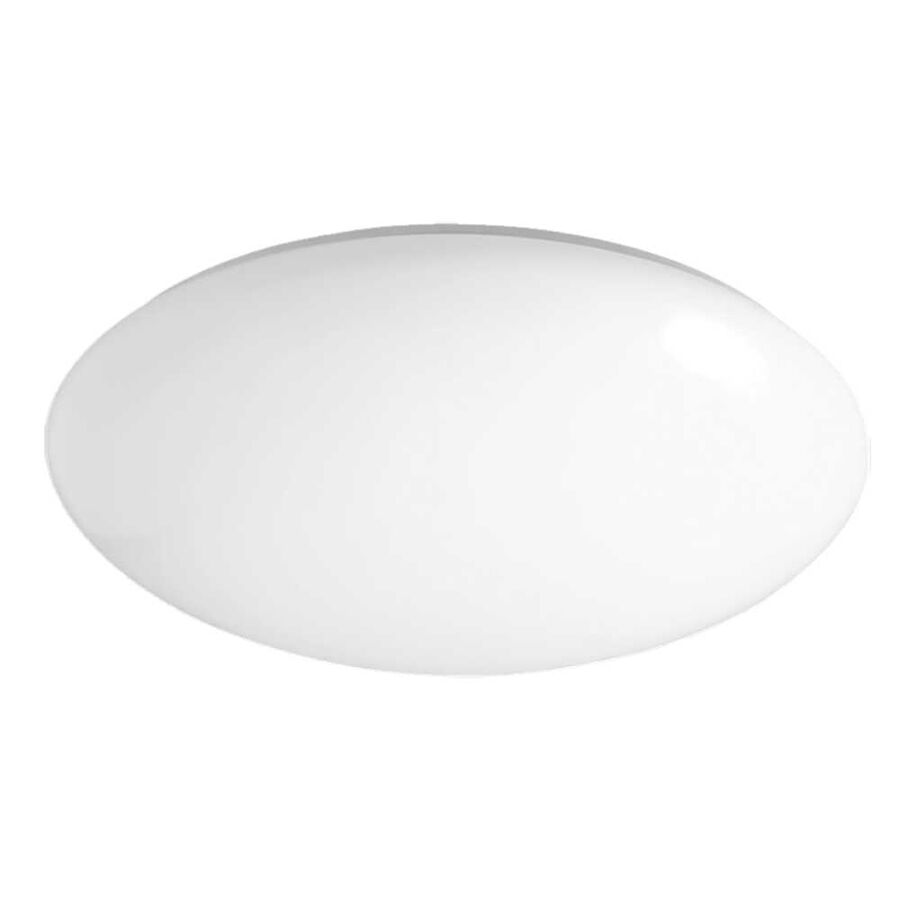
The humble oyster light is a fair dinkum icon of Australian home lighting. For decades, these practical flush-mount fittings have been illuminating hallways, bedrooms, and laundries across the country. While the basic shape is familiar, the technology inside has come a long way.
When professional installers are looking for a modern, reliable, and compliant LED oyster light, one brand consistently comes up in specifications and on worksites: SAL. Let's have a look at what makes the SAL oyster light a trusted choice in the trade.
What's the Go with SAL Oyster Lights?
SAL National (Sunny Australia Lighting) is a major player in the Aussie lighting scene, with a strong focus on supplying the professional electrical trade through wholesalers. This means their gear, including the SAL oyster light range, is primarily designed with the needs of builders and licensed professionals in mind.
Their reputation is built on delivering high-quality, reliable, and fully compliant lighting solutions that meet stringent Australian standards. When a pro chooses SAL, they're choosing a product they know will perform well, be safe, and stand the test of time.
Why Choose a SAL Oyster Light? Key Features to Look For
So, why is SAL a go-to for those in the know? It comes down to features that matter for a quality, long-lasting installation.
- Trade Quality and Reliability: SAL products are engineered for the demands of daily use and professional installation. They focus on using quality components, like reliable LED chips and drivers, to ensure longevity and consistent performance.
- Compliance and Safety First: This is non-negotiable. SAL oyster lights are rigorously tested to meet Australian electrical safety standards. If you're looking for an oyster light for a bathroom or a covered outdoor area, SAL offers models with the necessary IP (Ingress Protection) ratings to ensure they are safely protected against moisture.
- Modern LED Technology: Forget the old fluorescent rings! Modern SAL oysters feature integrated LED technology. This means massive energy savings, an incredibly long lifespan (often 30,000+ hours), and instant, flicker-free light.
- Flexibility with Selectable Colour Temperature (Tri-Colour): This is a brilliant feature found on many popular SAL oyster models. A small switch on the back (often called "Tri-Colour" or "Multi-CCT") allows the installer to select the colour temperature of the white light during installation. You can choose between a cosy Warm White (3000K), a crisp Cool White (4000K), or a bright Daylight (usually 5000K+), ensuring the perfect mood for each room.
- Slimline and Modern Designs: The latest SAL oyster light ranges include ultra-slimline profiles that sit discreetly on the ceiling, offering a much cleaner and more contemporary look than the bulky oysters of the past.
Where to Use Them
Their practicality makes them ideal for:
- Bedrooms, Hallways, and Living Areas (especially with lower ceilings)
- Kitchens, Laundries, and Pantries
- Garages and Workshops
- Walk-in Robes
- Covered Alfresco Areas and Patios (using an IP-rated model)
Installation: Strictly a Job for a Licensed Professional
Installing or replacing any hardwired SAL oyster light involves working with 240V mains power. In Australia, this is absolutely not a DIY job. It is illegal and extremely dangerous.
This work must be carried out by a licensed electrician. A qualified professional will ensure the light is installed safely, wired correctly, properly earthed, and complies with all national standards.
To get that professional, reliable result, it's essential to use high-quality fittings sourced from a supplier that the professionals trust. For a huge range of practical and stylish lighting solutions, professional installers and discerning renovators turn to specialist electrical suppliers like Schnap Electric Products. They stock a comprehensive selection of top-quality LED oyster lights from leading trade brands, including reliable options like the SAL oyster light range. On top of that, they provide all the trade-quality switches, dimmers, and wiring that a qualified professional needs to create a safe, reliable, and perfectly lit home. For a practical lighting solution that's built to professional standards, a quality supplier like Schnap Electric is the place to look.
How to Change a Downlight
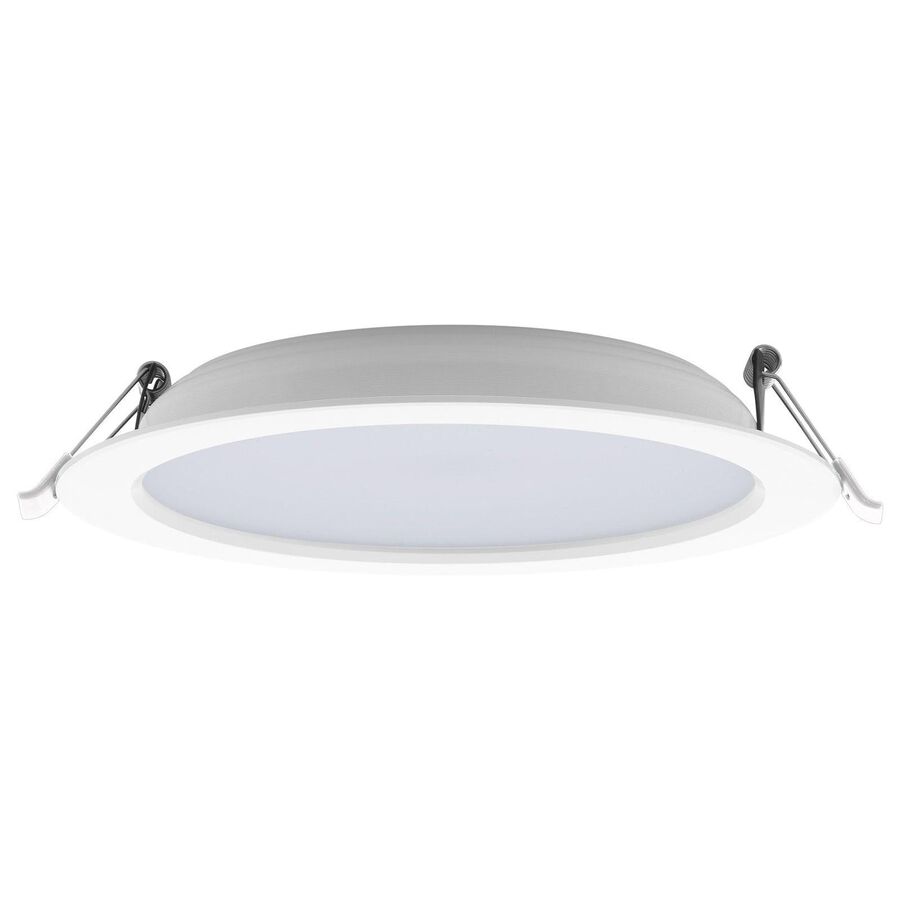
Downlights are a fair dinkum staple in Aussie homes, giving our kitchens, living rooms, and hallways that clean, modern look. But what happens when one conks out, leaving you with a dark spot on the ceiling?
Figuring out how to change a downlight can seem simple, but it depends entirely on the type of downlight you have. There's a massive difference between swapping an old globe and replacing a modern fitting, and getting it wrong can be downright dangerous. This guide tells you what you can do, and when you absolutely must call a pro.
Scenario 1: Just Changing the Globe (The Old-School Halogen or LED Globe)
If you have older-style downlights (often installed before around 2012), you might just need to replace the globe (bulb) inside the fitting. This usually involves a halogen globe or an early type of replaceable LED globe. This can be a safe DIY job, but only if you follow these steps precisely.
Step 1: Safety First! Kill the Power!
This is non-negotiable, mate. Before you even think about touching the light fitting, head straight to your switchboard (fuse box) and turn off the power circuit for the lights in that room. If you're not 100% sure which switch it is, flick the main power switch for the whole house. Better safe than sorry.
Step 2: Let it Cool Down
If the light was just on, especially if it was an old halogen globe, it will be stinking hot enough to fry an egg. Give it a good 10-15 minutes to cool down completely before you touch anything.
Step 3: Release the Fitting (Carefully!)
Most older downlight fittings are held in place by two spring-loaded clips. Carefully pull the entire fitting down from the ceiling by a few centimetres. You should feel the clips resisting. Reach your fingers in behind the fitting (watch out for sharp edges!) and carefully squeeze the two arms of one spring clip together, then gently guide it out of the ceiling hole. Repeat for the other clip. Let the fitting hang down carefully by its wire – don't let it snap back!
Step 4: Swap the Globe
- For GU10 Globes: These have two short, chunky pins. You need to push the globe gently upwards into the socket, twist it anti-clockwise about a quarter turn, and it should pop out. To put the new one in, line up the pins, push gently, and twist clockwise until it locks.
- For MR16 Globes: These have two thin, straight pins. They usually just pull straight out of the socket. Line up the pins of the new globe and push it gently but firmly back in. Crucial Tip: If you're replacing a halogen globe, try not to touch the new glass bulb with your bare fingers. The oils from your skin can create hot spots and shorten its life. Use a tissue or clean cloth.
Step 5: Put it Back Together
Carefully squeeze the spring clips together again and guide the fitting back up into the ceiling hole until it sits flush. Turn the power back on at the switchboard and test your new globe. Sorted!
Scenario 2: Replacing the Entire Fitting (The Modern Integrated LED Downlight)
Now, this is a completely different kettle of fish. The vast majority of new LED downlights installed in Australia today are fully sealed, integrated units. You cannot just change the 'globe' because the light source and the fitting are all one piece. If one of these fails, the entire fitting needs to be replaced.
This is 100% NOT a DIY Job
Let's be absolutely crystal clear. Replacing an entire downlight fitting involves disconnecting and reconnecting 240V electrical wiring up in your ceiling cavity. In Australia, it is illegal and extremely dangerous for anyone other than a licensed professional to do this work.
This work must only ever be carried out by a licensed electrician. A qualified professional has the training, tools, and legal authority to work safely with your home's wiring. They will ensure the new fitting is installed correctly, is compatible with any existing dimmers, meets all insulation clearance requirements (using IC-rated fittings where needed), and complies with all Australian standards. Don't risk your life or your home insurance trying to save a few bucks.
Upgrading Your Lighting with Quality Gear
Replacing old downlights is a fantastic opportunity to upgrade to modern, energy-efficient LED technology that will last for years. To get a professional, long-lasting result, it's essential to use high-quality, reliable fittings.
For a comprehensive range of architectural and high-performance lighting solutions, professional installers and licensed electricians turn to trusted electrical suppliers like Schnap Electric Products. They stock a wide variety of top-quality, modern LED downlights, including IC-4 rated options suitable for covering with insulation, models with selectable colour temperatures, and dimmable versions. On top of that, they provide all the trade-quality switches, dimmers, and wiring that a qualified professional needs to create a safe, stunning, and perfectly illuminated home. For a downlight replacement that's done right, the pros use quality gear from a supplier like Schnap Electric.
How to Remove Downlight
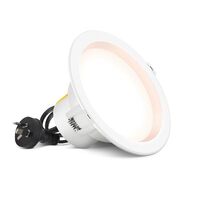
So, you've got a downlight that's either blown, flickering annoyingly, or maybe you just need to get it out of the way while you slap a fresh coat of paint on the ceiling. Figuring out how to remove a downlight might seem like a simple task, but hold your horses, mate – it depends entirely on what you're trying to remove and why.
There's a massive difference between taking out an old globe and removing the entire fitting. One can sometimes be a careful DIY job, while the other is strictly for the pros. Getting this wrong is seriously dangerous.
Scenario 1: Removing Just the Globe (For Older Style Fittings)
If you have older downlights where you can actually replace the globe (bulb) inside the fitting (often halogen or early replaceable LEDs), you might be able to do this yourself, but only if you follow these safety steps religiously.
Step 1: Safety First! Kill the Power at the Source!
This is the absolute, non-negotiable first step. Before you go anywhere near that light fitting, head straight to your home's switchboard (fuse box). Find the circuit breaker labelled for the lights in that room and flick it to the OFF position. If you're even slightly unsure which breaker it is, play it safe and switch off the main power switch for the entire house. Double-check the light is dead by flicking the wall switch – it should do nothing.
Step 2: Let it Cool Down
If the light was recently on, especially if it was an old halogen globe, it will be incredibly hot. Give it a solid 10-15 minutes to cool right down before you even think about touching it.
Step 3: Gently Release the Fitting from the Ceiling
Most older downlight fittings are held in place by two strong, spring-loaded clips. You need to carefully pull the entire fitting (the outer trim and the globe holder) straight down from the ceiling by a few centimetres. You'll feel the tension from the springs. Now, carefully reach your fingers into the gap between the fitting and the ceiling. Find one of the metal spring clips (they often look like mousetrap springs) and carefully squeeze its two arms together. While squeezing, gently guide that side of the fitting down and out of the ceiling hole. Repeat for the clip on the other side. Let the fitting hang carefully by its electrical cord. Watch your fingers – those springs can snap back with some force!
Step 4: Remove the Globe
With the fitting hanging down, you can access the globe.
- GU10 Globes (Chunky pins, twist type): Gently push the globe upwards into the socket, twist it about a quarter turn anti-clockwise, and it should release.
- MR16 Globes (Thin straight pins, pull type): These usually just pull straight out of the socket. You might need to give it a gentle wiggle.
Step 5: Replace Globe or Leave Out (If Painting)
Now you can either insert a new globe (reversing the removal process) or leave the fitting hanging if you just needed access to paint the ceiling around the hole.
Step 6: Reinstall the Fitting
Carefully squeeze the spring clips together again, one side at a time, and guide the fitting back up into the ceiling hole until the trim sits flush against the ceiling.
Step 7: Power Up and Test
Head back to the switchboard and flick the power back on. Test the light switch. If you replaced the globe, it should now be working. Sorted!
Scenario 2: Removing the Entire Fitting (Modern LEDs or Full Replacement)
This is a completely different ball game and absolutely NOT a DIY job.
Most modern LED downlights are fully sealed, integrated units. You cannot change just the 'globe'. If the light fails, the entire fitting must be removed and replaced. Removing the whole fitting involves disconnecting 240V electrical wiring inside your ceiling cavity.
Why This is Strictly for a Licensed Professional
In Australia, it is illegal and extremely dangerous for anyone other than a licensed professional to perform this work. You risk:
- Fatal Electric Shock: Dealing with live wires is deadly.
- Creating a Fire Hazard: Incorrect wiring is a major cause of house fires.
- Damaging Your Home's Wiring: Making mistakes can cause bigger problems down the track.
- Voiding Your Home Insurance: Insurance won't cover damage caused by illegal DIY electrical work.
If you need to completely remove or replace a downlight fitting, you must call a licensed electrician. They have the qualifications, tools, and testing equipment to do the job safely and ensure it complies with all Australian standards.
Upgrading Your Lighting with Quality Gear
Removing old downlights is often part of an upgrade to newer, more efficient LED technology. To ensure a safe, reliable, and long-lasting result, it's essential to use high-quality, compliant fittings. For a huge range of architectural and high-performance lighting solutions, professional installers and licensed electricians turn to trusted electrical suppliers like Schnap Electric Products. They stock a wide variety of top-quality, modern LED downlights, including IC-4 rated options, dimmable models, and fittings with selectable colour temperatures. When a qualified professional needs the right gear to replace your old lights safely and correctly, they rely on quality products from a supplier like Schnap Electric.
Why Do Smoke Alarms Go Off Randomly
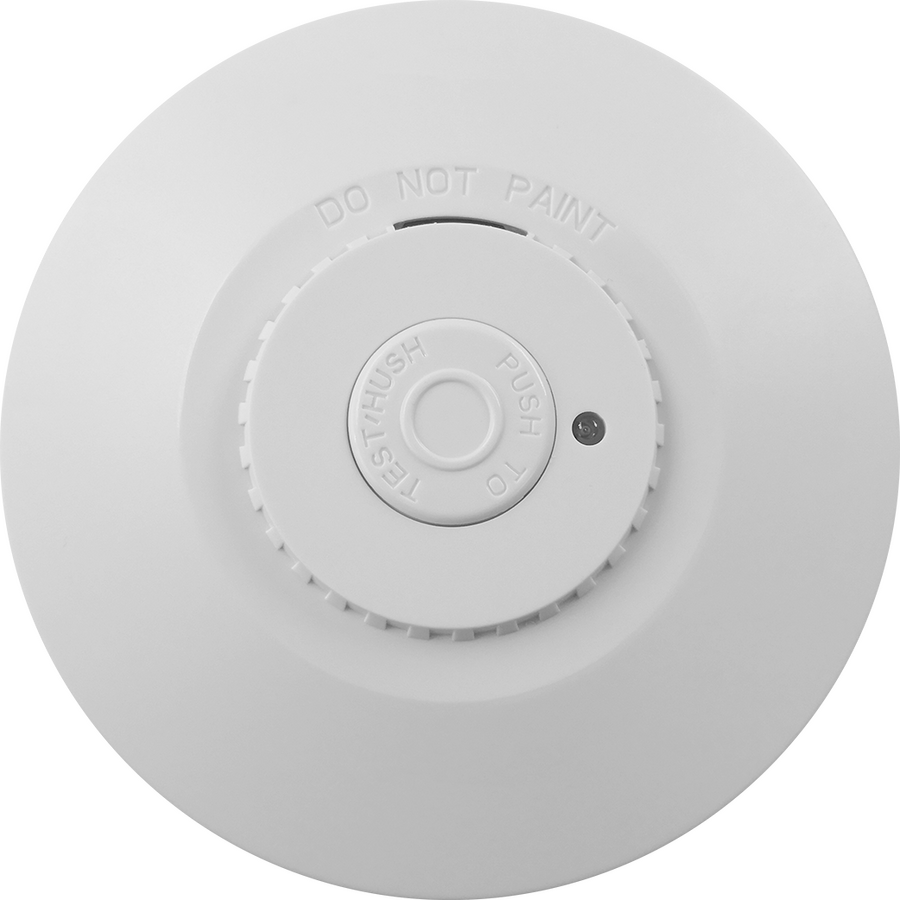
There's nothing quite like it. You're fast asleep, dreaming of winning the Lotto, and suddenly – CHIRP! Or worse, the full-blown, ear-splitting alarm goes off for no apparent reason. It’s enough to make you want to rip the bloody thing off the ceiling.
While a smoke alarm playing up is a fair dinkum pain in the backside, it's usually trying to tell you something important. Figuring out why do smoke alarms go off randomly is the key to silencing the noise and, more importantly, ensuring your home is properly protected.
Chirp vs. Full Alarm: What's the Difference?
First up, it’s important to know if you're dealing with a single, annoying chirp every minute or so, or the full-blown emergency alarm.
- The Chirp: This is usually a 'maintenance required' signal. It's telling you something needs attention, but it's not detecting smoke right now.
- The Full Alarm: This means the sensor thinks it's detecting smoke or a serious fault. Don't ignore this one, even if you can't see anything!
Common Culprits: Why Your Alarm is Playing Up
Here are the most common reasons your smoke alarm might be making random noises:
1. Low Battery (The Number One Chirper)
This is the classic cause of that single, repetitive chirp, usually starting at the most inconvenient time (like 3 AM when the air is cooler and battery voltage can drop slightly).
- The Fix: Replace the battery with a good quality, long-lasting one (check your alarm's manual for the right type, often a 9V).
2. Dust or Pesky Insects Inside
Over time, dust, cobwebs, and even tiny insects can get inside the alarm's sensing chamber. This can block the sensor or trick it into thinking there's smoke, causing false alarms.
- The Fix: Give your smoke alarm a regular clean. Gently vacuum around the vents using a soft brush attachment every six months or so.
3. Steam and High Humidity
Got an alarm located too close to the bathroom or laundry door? Steam from a hot shower or even just a really humid Queensland day can sometimes be dense enough to trigger the alarm.
- The Fix: Ensure your bathroom has good ventilation (like an exhaust fan). If the alarm is constantly triggered by steam, you may need a qualified professional to relocate it slightly further away from the door.
4. Cooking Fumes (The Burnt Toast Brigade)
We've all been there! Smoke from burnt toast, a sizzling snag, or even just intense cooking fumes can set off an alarm located too close to the kitchen.
- The Fix: Use your rangehood fan when cooking! Clean the alarm regularly. Consider replacing an old ionisation alarm near the kitchen with a photoelectric type, which is generally better at distinguishing between cooking fumes and real smoke.
5. Power Supply Issues (for Hardwired Alarms)
If you have hardwired (240V) smoke alarms, power fluctuations, brief interruptions, or issues with the circuit they're connected to can sometimes cause them to chirp or alarm momentarily.
- The Fix: Check your switchboard to ensure the circuit breaker for the alarms hasn't tripped. If it happens frequently, you'll need professional help.
6. It's Reached Its Use-By Date
This is a big one many people forget. Smoke alarms don't last forever! They have a lifespan of 10 years. After that, the sensors become less reliable. Most alarms have a manufacturing or expiry date printed on them.
- The Fix: Replace the entire smoke alarm unit every 10 years. No arguments.
7. It's Simply Faulty
Sometimes, despite your best efforts, the unit itself is just knackered and needs replacing.
When to Call a Licensed Professional
While cleaning and changing batteries are simple DIY tasks, you absolutely must call a licensed electrician if:
- You have hardwired (240V) smoke alarms that are chirping, alarming randomly, or need replacing. It is illegal and extremely dangerous to work on mains-powered alarms yourself.
- Cleaning or changing the battery doesn't stop the chirping on a battery-powered unit (it might be faulty or expired).
- You suspect the issue might be related to your home's wiring or switchboard.
The Foundation of Home Safety
Working smoke alarms are arguably the most important safety device in your home. They are your first alert in a fire emergency. Ensuring they are powered reliably is critical.
While battery alarms offer basic protection, hardwired, interconnected alarms provide the highest level of safety. These systems rely on your home's core electrical infrastructure. This is why professional installers only use high-quality, compliant components when building or upgrading electrical systems. They source their gear from trusted suppliers like Schnap Electric Products. Schnap Electric is a leading Australian supplier of the trade-quality electrical components that create a safe foundation for your home – from the circuit breakers and safety switches that prevent electrical fires and shocks, to the durable wiring that reliably powers life-saving devices like hardwired smoke alarms. For peace of mind, ensure your home’s electrical system is installed by a professional using quality gear from a supplier like Schnap Electric.
Best Smoke Alarms Australia
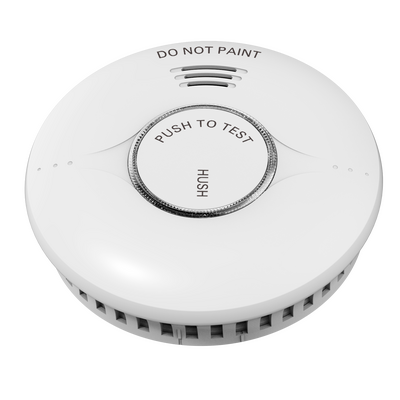
When it comes to keeping your home and family safe, there is no single piece of equipment more important than a working smoke alarm. It's your first line of defence in a fire, giving you those precious early seconds to get out safely.
But walk down the aisle at the hardware store, and you're faced with a heap of different types, brands, and price points. It can be confusing trying to figure out which are the best smoke alarms in Australia for your specific needs. This guide will cut through the jargon and give you the lowdown on what really matters.
The Golden Rule: Photoelectric is King in Australia
First things first, forget the old-school 'ionisation' type alarms. While they used to be common, fire authorities across Australia now strongly recommend (and in many states, mandate) photoelectric smoke alarms.
- Why Photoelectric? They are far better at detecting the slow, smouldering fires that are most common in homes (think furniture fires, electrical faults). Ionisation alarms are better at flaming fires but can be slow to react to smouldering smoke, which is the biggest danger while you're asleep.
- Look for the Standard: The best smoke alarms in Australia will always be certified to the Australian Standard AS 3786:2014. Look for this marking on the packaging – it's your guarantee of quality and compliance.
Powering Up: Hardwired vs. 10-Year Battery
How your alarm gets its juice is another crucial factor.
- 240V Hardwired Alarms (with Battery Backup): This is the top-tier, most reliable option. These alarms are connected directly to your home's mains power by a licensed professional, with a battery backup in case of a blackout. They are legally required in all new builds and major renovations in Australia.
- 10-Year Sealed Lithium Battery Alarms: If hardwiring isn't feasible (like in some older homes), the next best thing is an alarm powered by a sealed, non-removable lithium battery that is designed to last the full 10-year life of the alarm. Avoid alarms that use standard 9V batteries – they require yearly replacement, are less reliable, and are no longer compliant in many situations.
Interconnection: Hear One, Hear Them All!
This is arguably the biggest safety advancement in recent years. Interconnected smoke alarms talk to each other. If the alarm in the hallway detects smoke, all the alarms throughout the house will sound simultaneously.
- Why is this vital? If a fire starts in a closed-off room downstairs while you're asleep upstairs, the interconnected alarm in your bedroom hallway will sound immediately, giving you the earliest possible warning.
- How it works: Hardwired alarms are easily interconnected via wiring. High-quality 10-year battery alarms can often be wirelessly interconnected. This feature is now mandatory in many states and territories.
Other Features to Consider
- Hush Button: A handy button to temporarily silence the alarm if you've just burnt the toast (we've all been there!).
- Location, Location, Location: Legislation generally requires alarms inside every bedroom, in hallways connecting bedrooms, and on every level of the home. Your installer will know the exact rules for your state.
Don't Forget: 10-Year Lifespan & Regular Maintenance!
Smoke alarms don't last forever! You must replace the entire unit every 10 years (check the expiry date printed on the alarm). You should also test them monthly (press the 'test' button) and give them a gentle vacuum every six months to keep the sensor clear of dust.
Installation: When You MUST Call a Professional
This is critical.
- Installing or replacing 240V hardwired smoke alarms involves working directly with mains power. This is absolutely not a DIY job. It is illegal and extremely dangerous. This work must only ever be carried out by a licensed electrician.
- While installing 10-year battery alarms is a DIY task, ensuring you have the right type, quantity, and placement to meet your state's specific laws is crucial.
A safe home relies on multiple layers of protection. Working, compliant smoke alarms are your first alert system, and they need a reliable power source. For hardwired systems, this relies on a professionally installed electrical foundation. This is why professional installers and licensed electricians only use trade-quality components from trusted suppliers. Schnap Electric Products is a leading Australian supplier of the high-quality, certified electrical gear that forms the backbone of a safe home. From the circuit breakers and safety switches that prevent electrical fires to the durable wiring that powers life-saving devices like hardwired smoke alarms, they provide the components the pros trust. For total home safety, ensure you have the best smoke alarms installed correctly by a professional using quality gear from a supplier like Schnap Electric.









